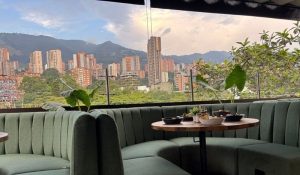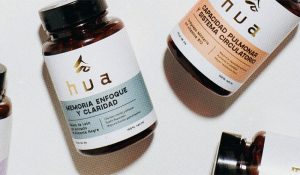The true path to success and a superior ROAS (Return on Ad Spend) lies in boosting your direct sales. To achieve this, simply having a good website isn’t enough; you need a comprehensive strategy that combines the right technology, intelligent automation, and CRO (Conversion Rate Optimization). This step-by-step guide will show you how to achieve this, positioning your hotel as the top choice for your future guests.
The Imperative of Direct Sales for Hotels
Direct sales are the oxygen of hotel profitability. Every booking that comes directly to your hotel, instead of through an intermediary, means significant savings on commissions (which can range from 15% to 25% or more). This saving directly impacts your profit margin. Furthermore, direct bookings grant you:
- Total Control of the Customer Relationship: Access to complete guest data from the outset, facilitating personalization and loyalty.
- Up-selling and Cross-selling Opportunities: You can offer room upgrades, special packages, and additional services directly to the guest.
- Loyalty and Repeat Business: Direct communication allows you to build loyalty and encourage future bookings, which have a much lower acquisition cost.
- Better Understanding of Your Audience: Your website data provides valuable insights into user behavior.
To maximize these benefits, technology, automation, and CRO are your best allies.
Step 1: Strengthen Your Technological Foundation
Before optimizing, you need a solid infrastructure.
1. State of the Art Direct Booking Engine
Your booking engine isn’t just a transactional tool; it’s your primary online salesperson.
- Intuitive and Responsive Design: It must be easy to use on any device (mobile, tablet, desktop). The booking process should be simple, clear, and with the fewest possible steps.
- Loading Speed: A slow engine drives users away. Use tools like Google PageSpeed Insights to evaluate and improve its performance.
- Real Time Pricing and Availability: Seamless synchronization with your PMS (Property Management System) and Channel Manager.
- Multiple Payment Options: Offer various secure payment gateways and currencies.
- Personalization: Ability to display personalized offers or exit-intent pop-ups.
- Examples: Availpro, SiteMinder, Cubilis, Mirai.
2. A Modern Property Management System (PMS)
The PMS is the hub of your hotel operations and the primary source of your guest data.
- Integration Capabilities: Crucial. Your PMS must integrate seamlessly with your booking engine, your CRM, your Channel Manager, and your marketing tools.
- Guest Data Management: Efficient storage of stay histories, preferences, and contact information.
- Examples: Opera PMS, Cloudbeds, Mews, Stayntouch.
3. CRM (Customer Relationship Management) as the Central Hub
Your CRM is the tool that unifies your guest data from all sources and allows you to build personalized relationships.
- 360-Degree Customer View: Integrates data from PMS, booking engine, web, email, and campaigns.
- Segmentation Capabilities: Allows you to create customer groups based on their history, preferences, Lifetime Value (LTV), etc.
- Marketing Automation: Essential for Lifecycle Marketing campaigns.
- Examples: Salesforce Sales Cloud, HubSpot (adaptable to hotels), or industry-specific CRMs like Revinate, Cendyn.
Step 2: Implement Intelligent Automation
Automation allows you to personalize the guest experience at scale, optimizing resources and elevating ROAS.
1. Email Marketing Automation
Set up automatic email sequences that accompany the guest at each stage of their journey.
- Enhanced Booking Confirmation: Not just a confirmation; include useful information, a map, links to hotel services, and up-selling ideas (e.g., “Upgrade your room to a suite for only X€”).
- Pre-Stay Emails: Send booking reminders, online check-in options, information about local activities, transfers, and more cross-selling opportunities (e.g., “Book your romantic dinner at our restaurant”).
- In-Stay Emails (optional, via app/Wi-Fi): Send personalized welcome messages, spa or pool offers, and real-time feedback requests.
- Post-Stay Emails: Thank you for the stay, request reviews on Google or TripAdvisor, and personalized offers for a future booking (e.g., “We miss you, here’s a 10% discount on your next visit”).
- Birthdays and Anniversaries: Send personalized greetings with special offers to celebrate at your hotel.
- Inactive Customer Reactivation: Design sequences to win back guests who haven’t booked in a while.
2. Automation in Digital Advertising
Utilize the automation capabilities of advertising platforms to optimize your ROAS.
- Smart Bidding: In Google Ads, use strategies like Target ROAS or Maximize Conversion Value. These automated bids use AI to optimize in real-time for booking value.
- Dynamic Audiences: Connect your CRM to feed Google Ads (Customer Match) and Meta Ads (Custom Audiences) with customer lists. You can create audiences for:
- High-intent remarketing: Users who visited your booking engine but didn’t complete.
- Repeat customers: Exclusive offers for them.
- Inactive customers: Reactivation campaigns.
- Lookalike Audiences: Based on your most valuable customers (extracted from the CRM) to find new prospects.
- High-intent remarketing: Users who visited your booking engine but didn’t complete.
- Dynamic Hotel Ads (Google Hotel Ads): Your prices and availability are automatically updated, and you can bid to appear directly on Google’s price comparison tools.
Step 3: Implement CRO (Conversion Rate Optimization) Strategies
CRO is the art and science of increasing the percentage of your website visitors who take a desired action (in your case, a booking). It’s about making your website and booking engine irresistible.
1. User Experience (UX) and Web Design Optimization
- Loading Speed: Top priority. Every second of loading delay increases the bounce rate.
- Intuitive and Clear Design: Navigation should be simple. “Book Now” buttons should be prominent and easy to find.
- High-Quality Visual Content: Professional, high-resolution photos and videos of rooms, amenities, and the overall hotel experience. Virtual tours are a plus.
- Essential Information Visible: Prices, availability, amenities, cancellation policies, and breakfast included should be transparent from the start.
- Mobile-First: Most searches and bookings begin on mobile devices. Your site must be perfectly functional and appealing on small screens.
2. Building Trust and Authority
- Reviews and Testimonials: Prominently display positive reviews from Google, TripAdvisor, and other OTAs. Implement widgets that show your average rating.
- Security Certificates: Ensure your website uses HTTPS. Display recognized security seals from payment gateways.
- Accessible Customer Service: Offer multiple contact channels: live chat, visible phone number, contact form.
- Awards and Recognition: If your hotel has received awards, display them proudly.
3. Web Persuasion Techniques
- Social Proof: “X people are viewing this room right now,” “Booked X times in the last 24 hours.”
- Urgency and Scarcity: “Only 2 rooms left at this price,” “Offer valid until tomorrow.”
- Clear Value Proposition: What makes your hotel unique? What experience do you offer? Communicate it immediately.
- Remove Friction in the Booking Process:
- Few steps to complete the booking.
- Allow guest booking (no account creation needed).
- Autofill fields.
- Clear “Back” button if the user makes a mistake.
- Show booking progress (e.g., “Step 1 of 3”).
- Few steps to complete the booking.
4. Website Content Personalization (Connected to CRM)
- Dynamic Content: If a returning guest visits your website, greet them by name and show them offers you know they’re interested in or the rooms they usually book.
- Exit-Intent Pop-ups: If a user is about to close the tab, trigger a pop-up with a special discount, a last-minute offer, or a chat to answer questions.
5. Continuous A/B Testing
- Hypothesis: Don’t guess; test. Formulate hypotheses about what you believe will improve conversion (e.g., “Changing the booking button color to green will increase CTR”).
- Tools: Use Google Optimize (though it’s being sunsetted, alternatives like Optimizely, VWO, or CRO functionalities of the booking engine itself) to test different versions of your web pages and booking engine elements.
- Measurement: Analyze the results to see which versions generate a higher conversion rate and, therefore, better ROAS.
Integrating Everything for Unstoppable ROAS
The real magic happens when these three pillars work in harmony:
- The data from your PMS feeds your CRM.
- Your CRM segments your customers and sends audiences to your advertising platforms (Google Ads, Meta Ads) and your email marketing tool.
- Your automated campaigns generate qualified traffic to your website.
- CRO strategies on your website and booking engine convert that traffic into bookings.
- Google Analytics 4 tracks the entire journey and revenue, allowing you to optimize your ROAS and CPA with data-driven attribution.
- Metasearch engines act as a price comparison tool, driving direct traffic to your website if you are competitive.
This virtuous cycle ensures that every marketing investment is more efficient, every customer interaction is more relevant, and every booking contributes optimally to your hotel’s profitability. By transforming from a simple room provider into a personalized experience manager, powered by technology, automation, and optimization, your hotel will not only stand out but become the preferred choice for travelers.
Contact us at Digisap, and let’s design together an SEO and digital marketing strategy so your hotel is the first choice, and guests book with you, not the competition.
Click here to schedule your free consultation and take your hotel to the next level





